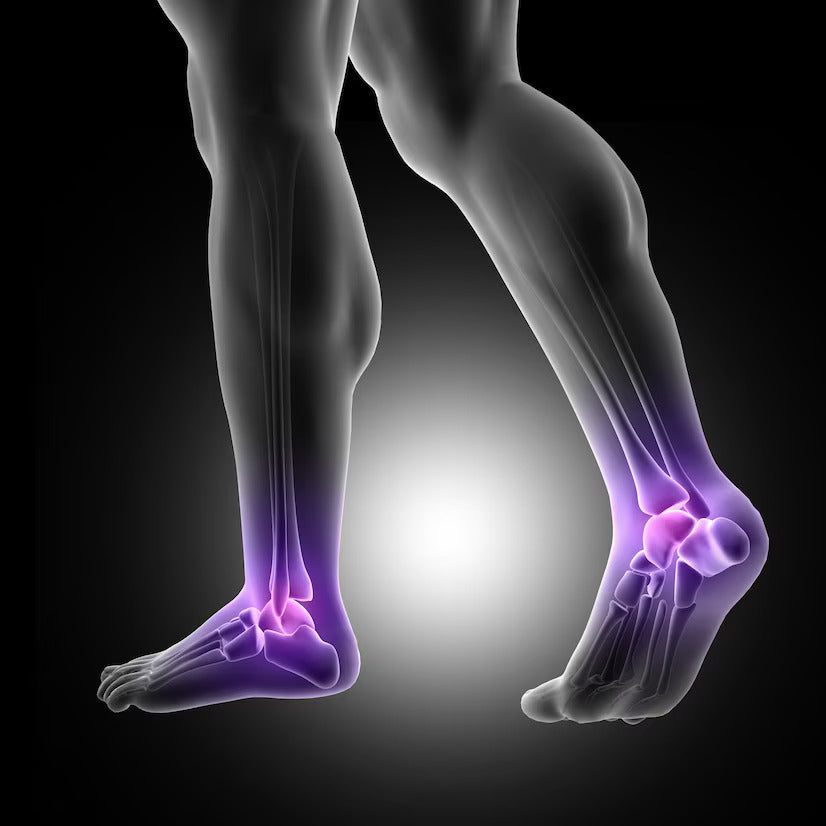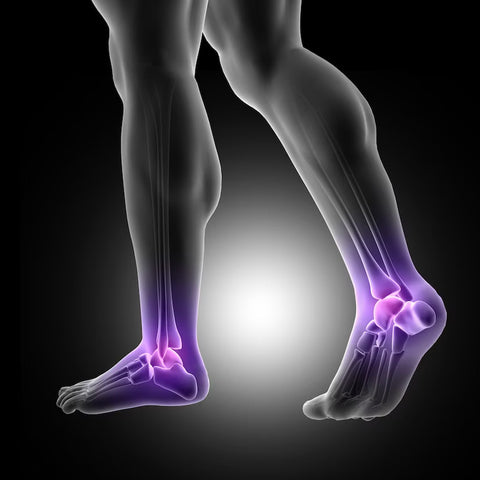
Foot Osteoarthritis: Common Symptoms And Diagnosis
Share
Foot osteoarthritis is a prevalent condition that affects many individuals, especially as they age. Understanding this condition and recognizing its common symptoms is crucial for early diagnosis and effective management. In this article, we will delve into the various aspects of foot osteoarthritis, including its definition, causes, diagnostic process, and differentiation from other foot conditions. We will also emphasize the importance of early diagnosis in preventing further joint damage and improving the quality of life for those affected.
Understanding Foot Osteoarthritis
Foot osteoarthritis (FOA) is a degenerative joint disease that primarily affects the foot's joints, particularly the weight-bearing ones. It occurs when the protective cartilage that cushions the bones gradually breaks down, leading to pain, stiffness, and functional limitations.
The exact cause of foot osteoarthritis is still not fully understood, but research suggests that a combination of factors contributes to its development. Age is a significant risk factor, as the wear and tear on our joints increases as we grow older. Over time, the repetitive stress and strain on the foot joints, as well as in the other body joints, can lead to the breakdown of cartilage.

Genetics also play a role in foot osteoarthritis. Some individuals may inherit certain characteristics that make their joints more prone to degeneration. This genetic predisposition, combined with other risk factors, can increase the likelihood of developing osteoarthritis (OA).
Obesity and excessive weight-bearing activities can further contribute to the development and progression of foot osteoarthritis. The additional weight places increased stress on the joints, accelerating the damage to the cartilage. Maintaining a healthy weight and keeping your muscles strong enough to absorb impact forces can help reduce the risk of developing osteoarthritis.
Previous foot injuries, such as fractures or sprains, can also increase the risk of developing osteoarthritis later on. When a joint is injured, the integrity of the joint structure may be compromised, leading to abnormal wear and tear over time. It is essential to seek proper medical attention and follow a rehabilitation program after a foot injury to minimize the long-term impact on joint health.
Diagnosing foot osteoarthritis typically involves a combination of medical history, physical examination, and imaging tests such as X-rays or MRI scans. Treatment options for foot osteoarthritis aim to manage symptoms, improve joint function and muscle strength, and slow down the progression of the disease. These may include lifestyle modifications, physical therapy, pain medications, orthotic devices, and in severe cases, surgical interventions.
It is important to consult with a healthcare professional for an accurate diagnosis and personalized treatment plan for foot osteoarthritis. With proper management and care, individuals with foot osteoarthritis can lead active and fulfilling lives while minimizing the impact of the disease on their daily activities.
Recognizing the Symptoms of Foot Osteoarthritis
Pain and Stiffness in the Foot
The primary symptom of foot osteoarthritis is pain, which often worsens with weight-bearing activities such as walking or standing for prolonged periods. The pain is commonly localized around the affected joint and may vary in intensity throughout the day. Stiffness is another hallmark symptom, especially in the morning or after periods of inactivity, disabling full range of movement without pain. Some individuals may also experience swelling and tenderness around the affected joint.
Changes in Foot Shape and Function
Over time, foot osteoarthritis can lead to noticeable changes in foot shape and function. Joint deformities, such as bunions or hammer toes, may develop as the disease progresses.
These changes can impact balance and gait, making walking more challenging. Additionally, reduced range of motion in the affected joints can limit the foot's flexibility and hinder daily activities.
The Diagnostic Process for Foot Osteoarthritis
Medical History and Physical Examination
Diagnosing foot osteoarthritis typically begins with a thorough medical history and physical examination. The healthcare provider will ask about the patient's symptoms, medical history, and any previous foot injuries. During the physical examination, the affected foot's range of motion, swelling, tenderness, and joint deformities will be assessed.
Imaging Tests for Foot Osteoarthritis
To further confirm the diagnosis, imaging tests such as X-rays or magnetic resonance imaging (MRI) scans may be recommended. X-rays can reveal joint space narrowing, bony spurs, and other characteristic signs of osteoarthritis. MRI scans provide detailed images of soft tissues, helping assess the extent of joint damage and detect any other potential soft tissues foot conditions that may be contributing to the symptoms.
Differentiating Foot Osteoarthritis from Other Foot Conditions
Foot Osteoarthritis vs. Rheumatoid Arthritis
While foot osteoarthritis and rheumatoid arthritis both involve joint inflammation, they differ in their underlying causes and treatment approaches. Rheumatoid arthritis is an autoimmune disease that primarily affects the joints, leading to pain, swelling, and stiffness. It can affect multiple joints simultaneously, whereas foot osteoarthritis typically affects specific weight-bearing joints. A thorough medical evaluation and appropriate diagnostic tests can help differentiate between the two conditions.
Foot Osteoarthritis vs. Gout
Gout is another condition that can cause foot pain and inflammation, often affecting the big toe joint. However, gout is caused by the buildup of uric acid crystals in the joint, leading to sudden and intense attacks of pain, redness, and swelling. In contrast, foot osteoarthritis develops gradually over time, with pain and stiffness being its hallmark symptoms.
Laboratory tests, joint fluid analysis, and imaging can aid in distinguishing between gout and foot osteoarthritis.
The Importance of Early Diagnosis
Preventing Further Joint Damage
Early diagnosis of foot osteoarthritis is crucial for preventing further joint damage and minimizing the impact on an individual's daily life. With timely intervention, healthcare providers can recommend strategies to manage pain, improve joint function, and slow down the disease's progression. Lifestyle modifications, such as weight loss and appropriate footwear choices, along with physical therapy exercises and strength training, can help increase force absorption, reduce joint stress and improve joint stability.
Starting Treatment and Managing Symptoms Early
Starting treatment early allows individuals to proactively manage their symptoms and maintain their quality of life. Pain medications, both oral and topical, can be prescribed to alleviate pain and reduce inflammation. Assistive devices, such as orthotic inserts or braces, can provide additional support to the affected foot joints. Physical therapy is often recommended to improve strength, flexibility, and range of motion, enhancing mobility and functionality.
In conclusion, foot osteoarthritis is a prevalent condition that can significantly impact an individual's quality of life. Recognizing its common symptoms and seeking early diagnosis is crucial for effective management. By understanding the causes, diagnostic process, and differentiating foot osteoarthritis from other foot conditions, individuals can take proactive steps towards managing their symptoms and improving their overall foot health. If you suspect foot osteoarthritis, consult with a healthcare professional to receive an accurate diagnosis and personalized treatment plan.
Author Bio

Inês Pinheiro
Certified Physiotherapist for Shoulder and Knee Injuries
Inês is a skilled physical therapist with a special interest and extensive experience in working with athletes, specifically football players and also neurologic patients.













